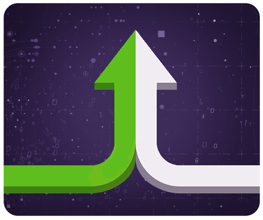
Navigating CPG Landscape: The Power of Retail Sales Data & Insights
The consumer packaged goods (CPG) landscape is dynamic and challenging to navigate, to say the least. The ascent to sustainable success for companies within this space hinges on an intricate understanding of various types of data—customer behavior and preferences, competitor data, demographics, and more. However, the pulse of that success is accurate, daily retail sales data, because after all, the name of the game is sales, and you need to know on a consistent basis what’s selling and where it’s selling and what isn’t selling.
What’s even more important for CPG brands is knowing WHY a product is or isn’t moving. That’s where retail sales insights come in. Those insights, when based on the most reliable point-of-sale (POS) data (as well as daily inventory data), will serve as the data-driven compass guiding suppliers and their retailer partners through changes in consumer demand or market conditions, supply chain disruptions, and uncertain economies. These invaluable insights derived from daily POS data at its most granular level should be the cornerstone of CPG sales, marketing, and supply chain strategies.
As CPGs strive for relevance and brand loyalty, increased shelf space, competitive advantages, and sustained growth, harnessing the power embedded within these retail sales insights and leveraging improved business intelligence becomes paramount to surviving and thriving in an ever-evolving marketplace.
This blog post delves into the pivotal role of retail sales data in enabling CPG companies to derive actionable insights, optimize enterprise-wide strategies, and improve their ROI and drive long-term, profitable growth.
Understanding Consumer Purchases and Trends
Daily retail sales data—when collected, cleansed, harmonized, and analyzed at an SKU and store level—allows brands to thoroughly understand what products consumers are purchasing, when they buy them, where they buy them, and in what quantities. This data is key to helping companies identify buying patterns, emerging trends, what products are flying off the shelves, and what consumer preferences are evolving into.
In understanding all this, CPG companies can innovate their products and offerings to meet current consumer demand and better predict, plan for, and meet future demand. Having this deeper business intelligence at their fingertips every morning empowers CPGs to make the most-informed, impactful business decisions compared to competitors who not only lack the same type of data but also lack a modern data platform, tools, and processes to accurately aggregate and decipher their data.
Key CPG insights that can be derived from retail sales data analysis
Optimal Product Portfolios and Assortment
Granular retail sales data aids in more accurate evaluation of product performance within a category. While clean, harmonized retail data gives clear insight as to what products are selling well, scrutinizing POS data also allows CPG companies to look at what might not be selling well. These insights allow them to better determine, in collaboration with their retail partners, where adjustments need to be made, whether those are to pricing, promotions, shelf location, or packaging.
With greater insights into daily sell-through data and inventory movement, brands can improve their assortment planning and strategically plan their inventory and manage their catalog around changes in demand and sales volumes throughout the year to satisfy customers and maximize profitability.
Ultimately, CPGs can focus on promoting and expanding the product lines that are top-performing and align with customer preferences. They can also consider phasing out or repositioning products that show declining sales or are not meeting customer expectations. Either way, optimizing product portfolios ensures that product offerings, both current and future, resonate with target audiences, thereby bolstering sales and creating continued brand loyalty.
Market Basket Analysis
Knowing which products shoppers frequently buy together enables retailers to organize their brick-and-mortar stores and e-commerce websites consistently and effectively. By looking at prior purchasing behavior, CPGs and retailers can also use it as a cross-sell tool for both in-store and online sales.
Understanding consumer buying habits through market basket analysis unveils correlations between products that are often purchased together to help retailers and CPGs work more intelligently together to boost sales. Finding items that consumers desire to buy—and buy together—helps sales and marketing teams develop more effective product placement, pricing, promotional strategies, and cross-sell and up-sell tactics.
Identifying these product groups and items that are most likely to be purchased together involves gathering, integrating, and analyzing large data sets, including purchase history and demographics. However, with the right retail sales data platform, CPG companies can develop strategies based on reliable market basket analysis that help them optimize retail execution, better manage inventory to ensure on-shelf availability, and gain market share.
Seasonal Variations and Promotion Effectiveness
Using daily SKU- and store-level POS data, CPGs can quickly identify seasonal trends, demand patterns, and variations, which allows them to plan and adjust inventory levels, marketing strategies, promotions, and new product launches more effectively. With near real-time retail data that helps brands understand seasonal fluctuations, they can more easily anticipate and capitalize on peak demand periods.
When brands can accurately evaluate the impact of promotions or discounts on sales, determine the ROI of different promotional strategies, and possess the insights on what works best, they can then fine-tune their current promotional strategies, invest in trade promotions that have proven to drive sales and customer engagement, and optimize future campaigns.
Many CPG companies allocate a significant portion of their gross revenues, often up to 20%, to fuel their promotional endeavors. This substantial investment stands as a testament to the importance of trade promotions and thus, the even greater importance of accurate insights into their success.
Geographical Insights
Actionable insights gained through analyzing retail sales data by region wield tremendous power in helping consumer brands identify regional variations in product preferences and trends. These regional insights enable CPGs to optimize supply chain logistics and product distribution to meet regional demands efficiently and tailor and accurately measure marketing tactics, including discounts, coupons, and special offers, to meet specific geographical market demands, consumer preferences, and even cultural nuances efficiently.
Supply Chain Optimization and Inventory Management
Analyzing daily retail sales and inventory data to generate timely insights plays a pivotal role in optimizing supply chain operations. Using these insights, CPG companies can improve their demand forecasting and demand planning, enabling more accurate production planning and efficient inventory management and ensuring product availability.
Armed with greater visibility into POS and inventory data, CPGs can improve their distribution strategies, optimize delivery routes, reduce lead times and holding costs, and enhance overall operational efficiency. By streamlining their supply chain processes to align more closely with consumer needs, suppliers can minimize stockouts and overstock situations, thereby avoiding costly markdowns and ensuring consumer satisfaction.
When a supplier is able to monitor inventory levels closely and accurately, they can more easily identify slow-moving or overstocked products, which enables sales, marketing, and supply chain teams to effectively collaborate on the necessary steps needed to move product quickly and profitably and eliminate the risk of lost revenue.
New Product Development
High-quality POS data can serve as a catalyst for product innovation including new product development and product enhancements within CPG companies. Daily retail sales data at the store level allows brands to evaluate the success of new product launches more immediately to be able to adjust pricing, inventory, marketing strategies, or investments accordingly to maximize sales and ROI.
Also, by accurately measuring previous product launches and based on their success, brands have the critical knowledge needed to refine product development and launch strategies to meet consumer demand. Retail sales insights can also help identify gaps in the market and develop innovative products to bridge those gaps.
Price Elasticity and Optimization
When CPG companies have access to comprehensive retail sales data across all retailers in all markets, they can pinpoint exactly how changes in product pricing affect sales at all levels or locations: store, chain level, geography, channel, etc.
These reliable insights into price elasticity enable brands to adjust pricing and implement dynamic pricing strategies to maximize revenue and maintain competitiveness within product categories and across markets.
How CPG Teams Leverage Retail Sales Insights
Sales and Marketing
Successful business strategies for sales and marketing teams rely on timely and granular insights based on having clean, comprehensive, harmonized retail data. Without the ability to gather and accurately interpret this data, brands will find it difficult to effectively plan, execute, and measure their sales and marketing initiatives.
When sales and marketing teams are able to focus on leveraging retail sales data and insights instead of spending countless hours wrangling it, they can make the most-informed strategic business decisions that will drive sales and revenue while strengthening retailer relationships and increasing consumer satisfaction and loyalty.
Here are several ways in which CPG sales and marketing teams benefit from greater insights:
- More targeted marketing campaigns and trade promotions
- More successful new product launches and enhancements
- Product innovation and optimization
- Optimized product assortment and pricing
- Improved retail operations and retail execution
- Improved customer segmentation and enhanced shopper experiences
- Competitive differentiation and advantage
- Continuous improvement and adaptation
- Enhanced channel performance
- Greater collaboration with retailers
- Real-time decision-making
Business and Data Analysts
Business and data analysts serve as pivotal conduits in unlocking the full value of daily retail sales data and analytics and in providing business intelligence and meaningful insights to various CPG teams that allow them to achieve peak performance.
When analysts can eliminate data silos and have access to the right data at the right time, they can confidently identify sales patterns or trends, growth opportunities, operational inefficiencies, and inventory risks and communicate those to the appropriate individual or team to inform strategic decision-making. With deeper insights available in near real time, brands can stay agile, competitive, and profitable.
Here are several areas where Retail Velocity's VELOCITY® retail data platform's automatic ingestion and harmonization of daily item- and store-level POS and inventory data and insights can aid CPG business and data analysts:
- Elimination of manual downloading and consolidation of data and reports from retailer and distributor portals
- Daily data and insights serve as a foundation for advanced analytics
- Elimination of data and department silos
- Improved predictive modeling and forecasting
- Support more accurate consumer behavior analysis
- Syndicated data imports and integration
- Data exports to your data warehouse, data lake, or BI tools of choice
- Increased trust in data quality
Supply Chain Management
Retail sales data and insights play a key role in optimizing supply chain operations. They facilitate more accurate demand forecasting and planning and enable more precise and efficient production planning and inventory management. Reliable insights aid in strategically placing inventory based on regional or demographic needs and in minimizing or eliminating out-of-stocks and excess inventory, and ensuring products reach consumers at the right time and place.
Here are a few areas where more accurate POS and inventory data can aid supply chain teams:
- More accurate demand forecasting
- Inventory optimization
- Track near real-time inventory across the supply chain
- Increased fill rates and reduced short shipping
- Improved retailer and distributor relationships
- Logistics and distribution optimization
- More agile manufacturing and production planning
CONCLUSION
By translating timely insights into actionable strategies, CPG companies can enhance their marketing initiatives, sales performance, product development, operational efficiency, consumer satisfaction, and retailer relationships. However, for those insights to be of most value, they should be derived from the most valuable retail data: daily SKU- and store-level POS and inventory data.
When CPGs make trustworthy, data-driven business decisions, they put themselves in a much greater position to stay competitive in a dynamic market and ultimately drive profitable growth for both their company and their retailer partners.
Our VELOCITY® software solution is a modern data platform that can automatically ingest, cleanse, and harmonize your data from any retail data source, regardless of the data delivery method or format—providing you one version of the truth for collaborative, strategic decision-making. Having served the CPG-retail industry for nearly 30 years and with more than 600 available retailer and distributor data adaptors, both U.S. and international, Retail Velocity has the experience, expertise, and sophisticated solutions to enable your company to achieve peak performance.
Ready to start your journey? Let's talk.



